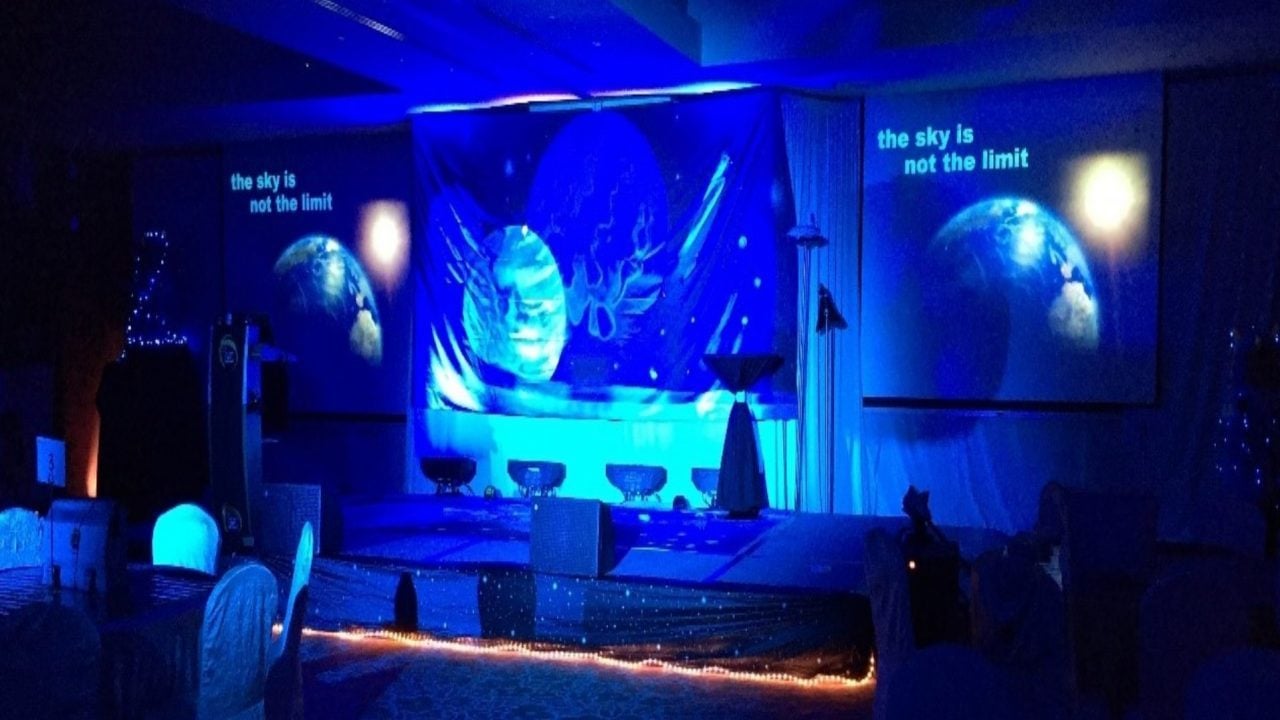A stinging article appeared in a major newspaper describing why some team building exercises can be a waste of time. A poll referred to in the article revealed that only 5% of the people surveyed say team building programs are effective, 68% say they are not effective, and 27% say it depends on the activity. When considering these apparently damning results, though, it is critical to consider how team building is being defined. In the article they are referring to what we would call ‘team games’, such as Amazing Race, Master Chef, paintball and golf. Comments and blogs related to the article reinforced the survey’s findings, with several indicating, “Don’t waste company’s valuable money, just buy lunch!” But building a team could and should be much more than simply playing games together.
We agree that many organizations might be wasting money on ‘team games’ where the participants may have fun but the activities are often contrived and the learning outcomes can be minimal. Instead, we believe, organizations should focus on ‘team development’ programs that are targeted, relevant, authentic and educationally oriented. Consider the three levels of team approaches we identify when discussing needs with a client.
These can help to define what the real needs of the group are in order to ensure an intervention program achieves the desired outcomes:
- Recreational Team Building: Designed to change the way people feel (to entertain, re-energize, relax, re-create, socialize, teach and learn new skills)
- Educational Team Building: Designed to change the way people feel and think (to gain awareness of needs, to add knowledge of new concepts, to understand new ways to look at old or familiar concepts)
- Developmental Team Building: Designed to change the way people feel, think, and behave (by increasing positive functional behavior, by improving interpersonal and intrapersonal relationships)
Why do a lot of team building programs not work?
Unfortunately, and all too often, this deeper level is not sought after nor reached. Real learning or transformation can be prevented by:
- a lack of reflection (defeating awareness)
- the presence of resistance (defeating intent)
- barriers to supporting transfer (defeating maintenance) Simply playing a game (often childish) is not team building even if the team plays it together.
However a group activity can become ‘experiential’ (an experience-based learning opportunity) when elements of reflection, support and transfer are added to the base experience, and of course where the base experience has credibility. Psychology Melbourne senior psychologist Campbell Thompson says team events are a waste of time if they’re badly planned or don’t have a specific organisational outcome in mind. Too many are arranged in the spirit of, “Oh God, got to do an annual away day”, he says, while others fail to consider the individual differences and needs of group members.
Trust falls gone wrong, and the real instrument of change
One of the most basic team building exercises, one which many of us would have participated in as kids, is still used today: the trust fall (falling backwards with your eyes closed, trusting that someone who has been positioned behind you will catch you). But trust without clear communication can be counter-productive, and sometimes even downright dangerous.
Even a simple activity like a ‘trust fall’ can be utilised on many levels if the learning experience is designed correctly.
- At the basic level an activity or problem solving challenge can simply be used to engage and motivate attendees and to get them mingling (RECREATIONAL).
- At the next level the activity or challenge can be used to demonstrate the value of teamwork and to introduce new team strategies (EDUCATIONAL).
- Once the benefit of teaming is evident, an activity can be used to actually build new teams and develop individual skills (DEVELOPMENTAL).
- Lastly, if one group is not getting along very well-if they withhold information, sabotage change efforts, and distrust one another– the organisation can use similar challenges to help them become more aware and effective in their work (REDIRECTIONAL).
In these examples, the facilitation methods used to introduce and reflect on the experiences (not the action events themselves) are the instruments of change.
Why team building can miss the point
Many people miss the point when they choose a team building program. The activity itself should not be the core focus, but should instead be seen as the means to achieving a specific outcome. So before jumping in to what may sound like a fun and exciting activity, it pays to clearly identify the outcomes desired and even go further deeper to assess the team’s current performance and future needs.
- Does the team need rewarding for a good run (turnover)?
- Do they need motivation after a tough year?
- Or will it be important to overcome personality clashes and team politics?
- Is the goal to release the team from bureaucratic responsibilities for a time and to inspire them to be creative and innovative?
- Or to help them to take advantage of different skills and strengths within the team and create alignment?
- Or perhaps the goal is to develop leadership?
- To understand virtual or cross cultural team challenges and talk through them in a safe environment?
- Perhaps the focus may be on helping the team identify its purpose and roles (vision mission values)?
Effective ‘team building’ that is really strategic ‘team development’ must be intelligent in content as well as stimulating in approach, and it needs to really connect with and directly address the individual and team needs of the group.
How is it possible to design a team building session that works??
The typical response of individuals to the prospect of having to participate in a team building exercise has, by one jaded observer, been described as a ‘groaning’ response. Some feel they have been ‘been-there-and-done-that’, while others are concerned about taking out valuable time from their day (playing games) to do something that they feel is irrelevant. Some people reluctantly participate out of a fear of being seen to not conform, but they do so with hidden contempt. In these cases the team building program can be in danger of backfiring. Through innovative simulations and engaging facilitation positive intervening experiences can and should be created. When professionally designed, these experiences can break down the barriers and provide unique leadership and team development opportunities and outcomes.
So how, exactly is this achieved?:
1) Check the group is 100% on board (challenge by choice) Example: We once had a boss want to run an adventure based program, but he assumed that everyone would want to do what he did (a common mistake). He didn’t realise some people just don’t like running around chasing clues or being physically challenged. After a number of complaints the adventure idea was ditched. We ended up in an exclusive luxury resort in Japan where one of the unique cultural elements was to sleep on the floor! As this experience was so culturally different from anything else the team had been involved in, the desired goal to create a ‘unique’ experience that would challenge the team was achieved. We created a 3 day program around this event that really broke down the barriers and achieved incredible outcomes. Solution: Taking people slightly outside their comfort zone does have benefits as it can challenge individuals to examine their behaviours, (with no hierarchy) but not to the point of discomfort where individuals feel coerced or threatened. Choose activities that all are comfortable enough with and all can participate willingly in.
2) Ensure the facilitators are skilled
Example: We recently ran a program with a skilled PhD trained facilitator from McKinsey – as she explained, facilitators at her level can spend hours just crafting a single question to ensure that the team can gain a major insight from the experience, and then adapt their behavior as a result. For the activity to have meaning there needs to be a learning outcome where some insight dawns on the participant in a way they will never forget, as it’s connected to the experience. Like a good chef, this goes way beyond simply knowing the individual ingredients to being able to design the final professional creation (a carefully blended combination). This is not the sort of experience where a university student tells a team to open the next clue, and then asks them ‘how they feel about it’. Solution: Ensure that the facilitators for the program are qualified and experienced. Inexpensive and inexperienced facilitators might save on the day’s budget, but the real cost is wasting the participants’ time if an activity cannot be properly framed, contextualized and debriefed.
3) Ensure the program is both intelligent and relevant Example: The danger with the ‘Amazing Race’ type exercises is that these programs tend to be linear with shallow content, and whilst fun, the time invested is often not worth the outcome. This easily leads to the ‘groaning’ /contempt effect. Solution: Ensure the program content is intelligent and relevant: good team building should have an authentic theme to make it memorable, with intelligent and relevant facts and case studies related to the theme. As an example, one of our most popular programs which uses this strategy is ‘ON THIN ICE’. The program is a simulated expedition to Antarctica, with lots of video footage and interesting facts and information about the challenges faced by actual Antarctic expeditions. During the simulation a variety of issues related to virtual and cross cultural team challenges, leadership challenges, communication challenges and so on quickly surface. With careful questioning and framing, the real issues can be effectively and professionally dealt with. To add some inspiration, we often invite a polar expeditioner in to share first-hand stories of the challenges individuals and teams face in these high pressured situations, and the leadership skills needed to survive.
4) Focus on the key outcome rather the activity / venue – creating high performance collaborative teams
Example: A client once came to us asking to design a highly competitive team building program. When we enquired about the desired outcome, we were told ‘collaboration’. Even the question was being answered, the client began to see the irony. This client was focusing on the activity rather than the outcome.
Most work teams would struggle with the ambiguity of collaboration in a culture that breeds self-survival and competition. And yet the productivity of a work group often ultimately depends on how the group members see their own goals in relation to the goals of the organisation. As 4 out of 9 people struggle with successful collaboration in the workplace, this should be a key focus of any team development program. Solution: Team building programs need to be engaging and exciting, but not at the expense of reaching what must be the key goal of any team development program – collaboration. Simply participating in a collaborative exercise will also not be enough. Anyone can collaborate when they need to and when the conditions are controlled. The experiential learning opportunity created should drive home the need for true collaboration no matter how challenging the circumstances.
Simulation for success
In most organisations employees are required to make more complex decisions more quickly, with fewer resources and no margin for error. Becoming good at this necessitates something few people have – opportunities to practice. Musicians, actors and athletes wouldn’t dream of performing without extensive practice. But how do business people practice? Mostly they end up making learning by trial and error. But learning from real mistakes can get expensive – both for the company and for the people who make them.
Simulations create a “virtual practice field” that allows individuals and teams to test assumptions and experiment with ideas without having to suffer financial reversals or career setbacks. So what does effective team building do? Peter Senge says that companies need to create practice places where Issues that arise in the work place can be isolated and focused on. This enables the team to see the consequences of particular actions and Incidents that can occur very rapidly in the workplace, and ensure they can be examined in more detail. The complexities of the everyday working environment can be simplified and analyzed. Actions and attitudes that cannot be reversed or taken back in the real world can be re-tried countless times in a protected environment. IF the participants are successfully brought on board, the environment is favourable, the content intelligent, the method educational, the facilitator skilled, and the focus correct… team building experiences can be high impact and highly transformational. As Plato has so cleverly identified, “You can discover more about a person in an hour of play than a year of conversation.” Ensure the experience is well designed and planned, and you can ensure great success.

Intelligent in Content AND Stimulating in Approach
- Intelligent team building involves the deliberate use of action events and facilitated reflection to bring about lasting change and learning.
- Intelligent team building helps leaders and teams to reflect on and find real solutions to their business issues. Through innovative simulations & engaging facilitation, we create positive intervening experiences which break down barriers and provide unique leadership and team development opportunities and outcomes.
- Intelligent team building involves the deliberate use of authentic experiences and facilitated reflection to create a lasting impact. Intelligent team building doesn’t just provide clients with one extreme of light fun experiences or the other extreme of straight dry skills training, we introduce stimulating educational processes that lead to real transformation.
Intelligent team building creates ‘practice fields’ or ‘virtual worlds’ enabling participants to see: Issues that arise in the work place over a long period of time can be isolated and focused on to see more clearly the consequences of particular actions. Incidents that occur very rapidly can be examined in detail to study more carefully. Actions and attitudes that cannot be reversed or taken back in the real world can be re-tried countless times in a protected environment. The complexities of the everyday working environment can be simplified and analysed. (Senge)
Good design and facilitation provide the stimulus to encourage the group to discover the answers. Our Who Killed Creativity is a highly innovative and interactive program “Who Killed Creativity?” provides an opportunity for participants to identify the potential psychological and cultural blocks to innovative thinking, and to develop critical and creative thinking skills. It uses a CSI theme with an investigative ‘detective’ approach to make the learning memorable, and identify challenges, whilst underneath being a diagnostic tool and then finding solutions.
The Chocolate Factory Business Simulation & The Creative Connection. Customer Focused Innovative Solutions
The Sky is not the Limit intelligent team building event
The Reality Of Virtual Teams- The Virtual Navigation Game (On Thin ICE)
Team Building Bali – Village Celebrations – one of our oldest signature programs unique to Bali. More than just a tourist attraction.
Ramayana Rescue is the ultimate team building cultural experience
CSI-1 Who killed creativity?… And how to get it back? A Digital gameboard for leaders & teams.

Gaia Grant (PhD) is a lecturer and researcher at the University of Sydney Business School in the Discipline of Strategy, Innovation, and Entrepreneurship, focusing on research into innovation paradoxes and ambidextrous leadership. Gaia is also a Director of Tirian Innovative Solutions, & the co-author (with Andrew Grant) of a number of books including ‘The Innovation Race’, and “Who Killed Creativity?”.

Andrew Grant is the Director of Tirian Innovative Solutions, and co-author (with Dr Gaia Grant) of a number of books including ‘The Innovation Race’, and “Who Killed Creativity?”.


